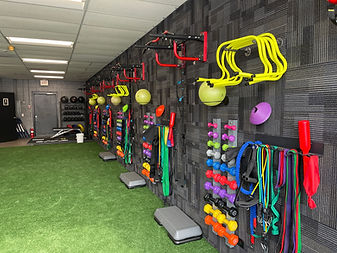Sports focused physical therapy & performance training in Algonquin, IL
What We Treat
Arthritis
OTHER AILMENTS
Get Your Joints Moving with Arthritis Relief
It is estimated that nearly 60 million Americans suffer from some form of arthritis and there are over 100 arthritic related conditions. It mostly effects knees, hips, hands, and the spine. Some individuals have arthritis in one joint while others have involvement in many joints. It is the most common disability in the country, making it difficult for many people to perform daily activities without experiencing pain. The pain and inability to perform normal routines often increases with time and age. If you’re living with arthritis, a physical therapist may be able to help you eliminate or reduce arthritis pain and increase your mobility.
We Treat the Most Common Forms of Arthritis
Arthritis is a general term used to describe inflammation in the joints which can cause pain, stiffness, and swelling. The most common forms of arthritis include osteoarthritis and rheumatoid arthritis.
Osteoarthritis is a degenerative joint condition where the cartilage between the joints wear down over time. This can lead to bone-to-bone contact which can cause pain, stiffness, and swelling. Other symptoms may include tenderness, warmth to the touch, and cracking or grating that can be heard. Over time, individuals with arthritis move less, which often compounds the problem. Osteoarthritis occurs with age, obesity, previous joint injuries, and overuse. Osteoarthritis is a disease of the whole joint, not just cartilage. Bones in the affected joints become weaker, the connective tissue surrounding the joint deteriorates and inflammation can damages the joint lining. Contrary to decades of belief, inflammation does play a key role in osteoarthritis.
Rheumatoid arthritis occurs when your body’s own immune system begins to attack the lining in the joints. This is sometimes called inflammatory arthritis. The theory is that something in the environment - a virus, stress, or smoking can trigger it in people who are genetically predisposed. Recent research has also highlighted the complex and critical role of gut microbes in immune-related inflammatory diseases like Rheumatoid Arthritis. When these microbes get out of balance due to poor diet, antibiotic treatments, stress, or some other factors, they may no longer regulate the immune response in a normal way. This is thought to be one of the key contributing factors to Rheumatoid arthritis and other autoimmune-related inflammatory conditions.
The treatment for arthritis depends on the type and severity of the condition. Physical therapy is a common first line defense. While physical therapy will not cure arthritis, many times it can improve motion, decrease pain, and improve day to day function.
A physical therapist can design an exercise program that is tailored to the specific needs of the individual and their arthritis symptoms. This may include exercises to improve joint mobility and strengthening exercises to reduce pain and inflammation. Pain-relieving techniques such as electrical stimulation and ice/heat can also improve symptoms.
Currently, there is no cure for arthritis or joint inflammation and damage. Medications are often prescribed for arthritic pain and maybe be needed for long term management. However, physical therapy can also aide in self-management of symptoms. A physical therapist can put together a detailed treatment plan that addresses your conditions and health goals. Physical therapy can assist in restoring lost mobility and prevent further mobility loss from occurring. Guided strengthening exercises are critical to the treatment plan and it is important to start treatment as soon as possible to achieve the best possible long term outcome.
Other treatment may include techniques tailored to preserve daily function; how to correct your posture to protect your joints, how to properly use walking devices if needed, or using taping or bracing techniues during activities. Self-management techniques such as thermal treatments, electrical stimulation, and adjusting your activity levels and intensity may also be recommended. It’s important to consistently follow your physical therapist’s instructions and practice your exercises at home on a regular basis. If your condition changes, your physical therapist may alter your treatment program and change your exercise prescription.
While there is no cure for arthritis, it is possible to alleviate arthritic symptoms by improving your joint movement, muscle strength, balance, and coordination through physical therapy treatments. In some cases, physical therapy can make it possible to eliminate symptoms entirely. Wellness tune ups and education on lifestyle changes can be beneficial to keeping mobile and strong.
There’s no reason that chronic pain and stiffness should affect your daily life. Expert care with our physical therapy team can help you to MOVE BETTER, PERFORM BETTER, and BE BETTER.
Get pain relief for arthritis and joint care today and get MOVING in the right direction with your care. Contact our center in Algonquin, IL, today, at 224-505-3343. You don’t have to suffer another day!

Physical Therapy Care for Arthritis Relief
Set up an Appointment Today!







